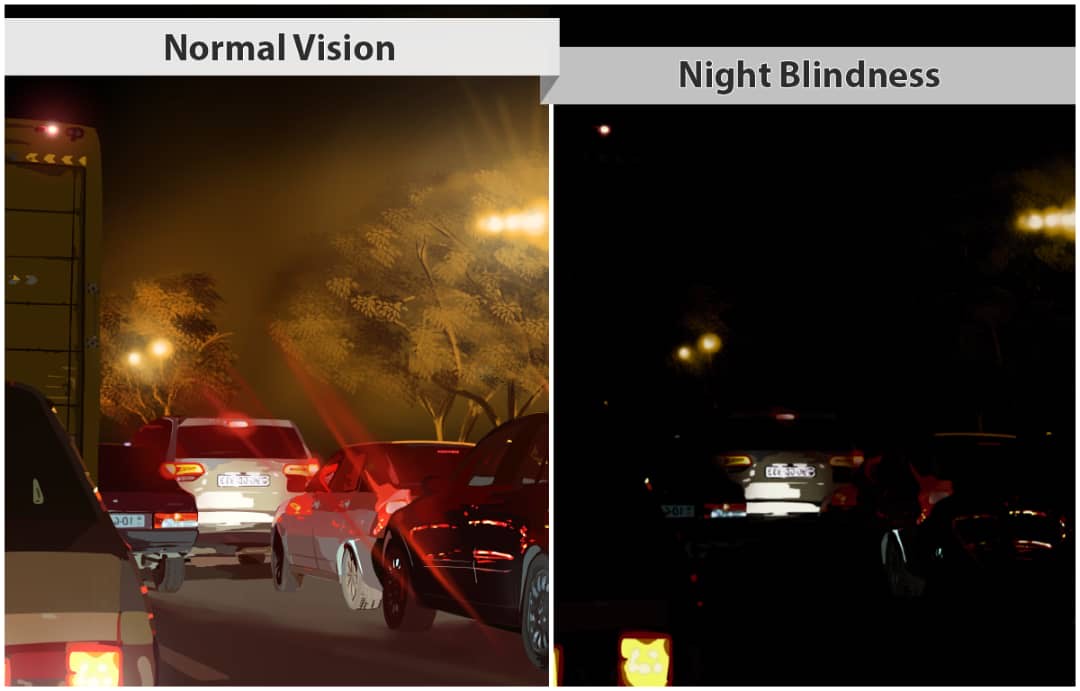NIGHT BLINDNESS (NYCTALOPIA)
Night blindness does not necessarily mean that one cannot see at night, Rather NIGHT BLINDNESS is the inability of the eye to adapt to reduced illumination or dim light.
Night blindness describes a symptom, not a disease.
Mechanism of Night Vision
The eyes need to adjust properly in order to see well at night or in low-light conditions.
The first necessary adjustment involves the pupil. The pupil becomes larger when exposed to a dark or dim environment to enable more light to enter the eye.
The light then moves to the retina which contains the photoreceptors called the Rods and Cones.
Cones provide color vision, enabling us to see during the day or in bright light.
Rods provide black-and-white vision, enabling us to see in the dark. This contains a receptor protein called Rhodopsin. When light falls on rhodopsin, it undergoes a series of changes generating electrical signs that are carried to the brain via the optic nerve. In the absence of light, rhodopsin is generated from the synthesis of Vitamin A.
When the Rods stop responding to light, it leads to decreased night vision or night blindness.


Conditions that can cause night blindness are:
- Vitamin A Deficiency
- Cataracts
- Glaucoma
- Macular degeneration
- Diabetic retinopathy
- Myopia
- Refractive surgeries
- Retinitis pigmentosa
SYMPTOMS
- Weak sight in dim light.
- Difficulty while driving at night.
- Difficulty walking around at night or dim lights.
- When it is dark out and the road illumination is poor, seeing is often a challenge.
Seeing your optometrist or ophthalmologist for a comprehensive eye examination is the best way to find out exactly what is causing your night blindness.


